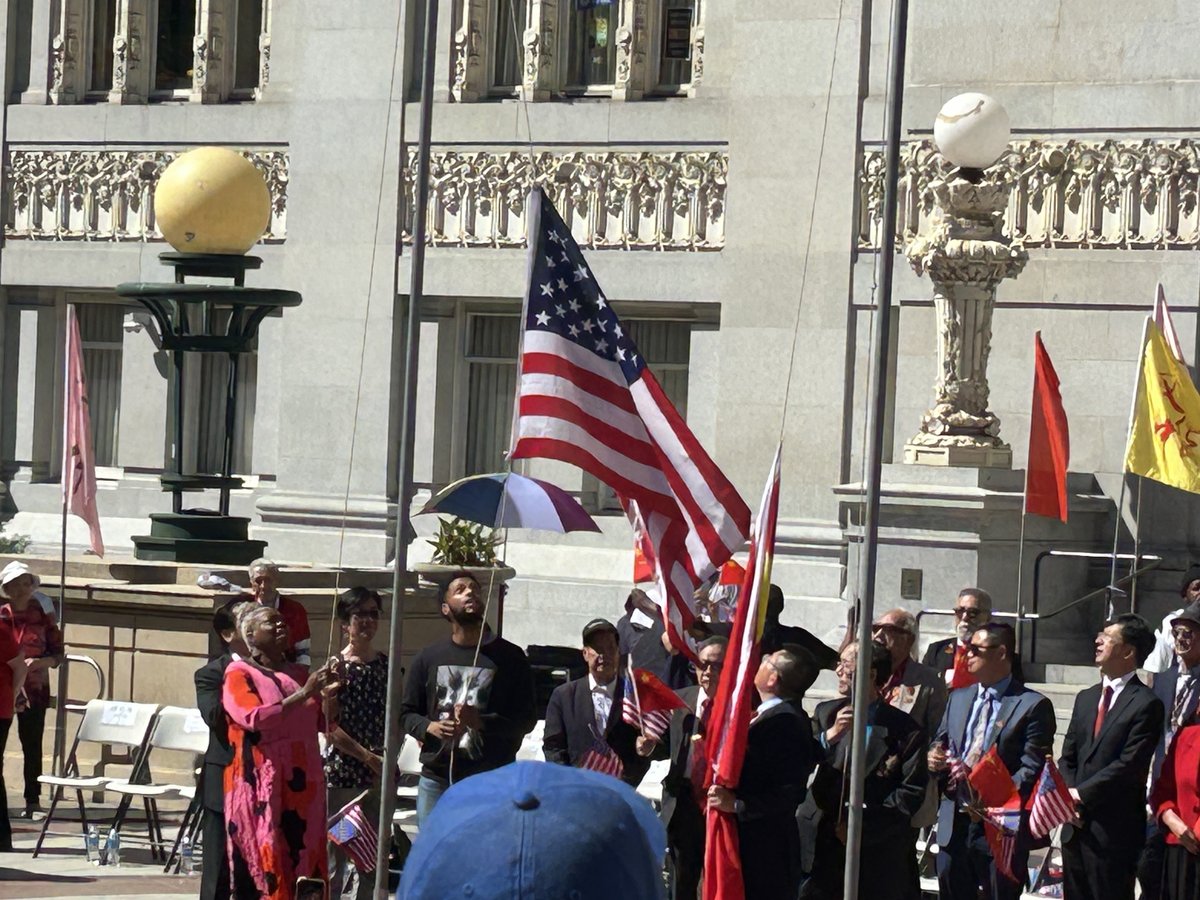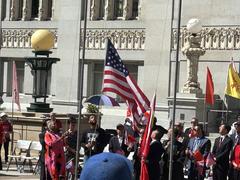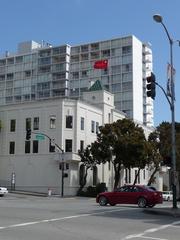
Chinese Consulate General, San Francisco
Chinese Consulate General San Francisco: Visiting Hours, Tickets, and Visitor Information
Date: 14/06/2025
Introduction
The Chinese Consulate-General in San Francisco is among China’s oldest and most influential diplomatic missions in the United States, established in 1875 during a period of significant Chinese migration and community formation in California. Over the years, the consulate has played a pivotal role in consular protection, cultural preservation, and fostering diplomatic and economic relations between China and the United States. Notably, its advocacy during the aftermath of the 1906 earthquake helped preserve San Francisco’s Chinatown and supported the rights of Chinese immigrants amid challenging immigration policies (history.com, NPR).
Today, the consulate’s jurisdiction includes Northern California and several western states. It provides essential services such as visa processing, passport renewal, and support for Chinese nationals, while also serving as a hub for cultural, educational, and economic exchange (freechinavisa.org, click2visas.com). Located at 1450 Laguna Street near Chinatown, the consulate is a vibrant symbol of enduring cultural ties and community engagement (chinaconsulatesf.org, MFA.gov.cn).
This comprehensive guide details visiting hours, appointment and accessibility requirements, travel tips, and the historical and cultural context of the consulate. Whether you are seeking consular services or interested in exploring San Francisco’s Chinese heritage, this article provides all the key information you need.
Contents
- Introduction
- Historical Origins and Evolution
- The Consulate’s Impact after the 1906 Earthquake
- Development of Diplomatic Functions and Jurisdiction
- Visitor Information: Hours, Appointments, and Location
- Role in U.S.-China Relations
- Community Engagement and Cultural Significance
- Architecture and Symbolism
- Modern Diplomatic Functions
- Legal and Jurisdictional Framework
- Tourism, Education, and Cultural Exchange
- Frequently Asked Questions (FAQ)
- Conclusion
- Sources
Historical Origins and Evolution
San Francisco became the principal point of entry for Chinese immigrants during the mid-19th century Gold Rush, rapidly developing the largest Chinese community in North America. The consulate was established in 1875 to provide consular protection and serve as an advocate for Chinese nationals amid increasingly discriminatory laws, such as the Chinese Exclusion Act of 1882 (history.com). The consulate mediated legal issues, facilitated communication with local authorities, and became a cultural anchor for the community.
The Consulate’s Impact after the 1906 Earthquake
The 1906 earthquake and fires devastated Chinatown and destroyed the original consulate. In the aftermath, the consulate played a decisive role in resisting city proposals to relocate Chinatown, asserting the rights of Chinese residents to remain in their historic district. This advocacy was critical in preserving Chinatown’s location and cultural integrity (NPR). Additionally, the destruction of city records allowed many Chinese immigrants to claim citizenship and bring family members to the United States, with the consulate offering vital support through complex legal processes (history.com).
Development of Diplomatic Functions and Jurisdiction
The San Francisco consulate is one of five Chinese diplomatic missions in the United States and has expanded its jurisdiction to cover Northern California, Alaska, Nevada, Oregon, Washington, Idaho, Montana, and Wyoming (embassies.net, freechinavisa.org). The consulate’s core functions include:
- Issuing and renewing Chinese passports and travel documents
- Providing notarial and authentication services
- Assisting Chinese nationals in need
- Facilitating educational, business, and cultural exchanges
- Processing visas for U.S. citizens and residents traveling to China (click2visas.com)
Visitor Information: Hours, Appointments, and Location
Location: 1450 Laguna Street, San Francisco, CA 94115
Visiting Hours: Monday–Friday, 9:00 AM–12:00 PM and 1:30 PM–4:30 PM. Always check the official website for updates or holiday closures.
Appointments: Required for most consular services (e.g., visas, passports). Appointments must be scheduled online in advance. There is no general admission fee, though service-specific fees apply.
Accessibility: The building is wheelchair accessible; visitors with special needs should notify the consulate ahead of time.
Transportation: The consulate is accessible via Muni bus lines and is within walking distance of Chinatown. Parking is limited, so public transit is recommended.
Role in U.S.-China Relations
The consulate is central to China-U.S. relations on the West Coast, leveraging San Francisco’s status as a hub for Chinese-American culture and commerce. It organizes cultural festivals, art exhibitions, and educational initiatives that foster mutual understanding and people-to-people diplomacy (chinaconsulatesf.org). During periods of bilateral tension, the consulate maintains crucial communication channels and supports the local Chinese community.
Community Engagement and Cultural Significance
Historically, the consulate has been an advocate for Chinese immigrants, supporting legal claims, humanitarian needs, and community organizations. Its involvement in rebuilding Chinatown after the 1906 earthquake exemplifies its commitment to cultural preservation (NPR). Today, it supports language schools, youth exchanges, and commemorative events highlighting the Chinese-American community’s contributions (history.com).
Architecture and Symbolism
The consulate’s building at 1450 Laguna Street is near the historic Chinatown district (click2visas.com). The surrounding area features a blend of Chinese and Western architectural styles, reflecting the community’s post-1906 rebuilding efforts and cultural pride (NPR).
Recommended visual: Photo of the consulate with alt text: “Chinese Consulate-General San Francisco building near Chinatown.”
Modern Diplomatic Functions
In recent decades, the consulate has become an active participant in high-level visits, business and academic exchanges, and emergency response coordination. Its public diplomacy initiatives engage with the tech sector, arts, and education, enhancing China’s image abroad and building networks of cooperation (thefreelibrary.com).
Legal and Jurisdictional Framework
The consulate’s services are available only to residents within its jurisdiction (click2visas.com). It operates under the Vienna Convention on Consular Relations and is subject to U.S. federal and local laws, ensuring the protection of Chinese nationals and compliance with legal standards.
Tourism, Education, and Cultural Exchange
By facilitating visas and promoting cultural events, the consulate supports tourism, academic exchanges, and professional visits between China and the United States. Its backing of Chinatown’s festivals, museums, and heritage sites contributes to San Francisco’s appeal as a major tourist and cultural destination (history.com).
Frequently Asked Questions (FAQ)
Q: What are the consulate’s visiting hours?
A: Monday–Friday, 9:00 AM–12:00 PM and 1:30 PM–4:30 PM. Check the official website for updates.
Q: Do I need tickets to visit?
A: Appointments are required for consular services; there is no general admission ticket.
Q: Is the consulate accessible for people with disabilities?
A: Yes. Notify the consulate in advance for any special accommodations.
Q: What services are provided?
A: Visa and passport issuance, notarial services, assistance for Chinese nationals, and support for cultural and trade exchanges.
Q: What attractions are nearby?
A: The consulate is close to Chinatown, the Asian Art Museum, and other historic sites in San Francisco.
Conclusion
The Chinese Consulate-General in San Francisco is not just a diplomatic office but a dynamic center for cultural exchange, community support, and international engagement. Its deep historical roots and ongoing programs make it an essential part of San Francisco’s multicultural landscape. Visitors are encouraged to make appointments in advance, check current visiting hours, and explore local cultural landmarks to enrich their experience. For the latest updates and guidelines, consult the official consulate website and consider downloading the Audiala app for real-time travel resources.
Golden Gate Bridge: Hours, Visitor Information, and Local Attractions
Introduction
The Golden Gate Bridge is San Francisco’s most iconic landmark, connecting the city to Marin County and offering spectacular views, rich history, and cultural significance.
History and Significance
Opened in 1937, the Golden Gate Bridge was once the world’s longest suspension bridge and remains a testament to American engineering and design. Its International Orange color and Art Deco elements have made it an enduring symbol of the city.
Visiting Hours and Accessibility
- Pedestrian and Cyclist Access: 24 hours a day, seven days a week. Daylight hours (5:00 AM–9:00 PM) are safest for visitors.
- Visitor Center: Open daily from 9:00 AM to 6:00 PM, featuring exhibits, a gift shop, and restrooms.
- Accessibility: Wheelchair-accessible paths and facilities are available.
Tickets, Parking, and Tours
- Bridge Access: Free for pedestrians and cyclists.
- Tolls: Southbound vehicles pay an electronic toll.
- Parking: Limited near the Welcome Center and Vista Point; metered street parking fills quickly.
- Guided Tours: Offered by various companies. Booking in advance is recommended.
Top Things to Do
- Photography: Best viewpoints include Battery Spencer, Fort Point, and Marin Headlands.
- Walking/Biking: Trails connect the bridge to Crissy Field, the Presidio, and Marin Headlands.
- Nearby Attractions: Explore Alcatraz Island, Coit Tower, and the Palace of Fine Arts.
Visitor Tips
- Visit early or late for fewer crowds and better light.
- Dress in layers; fog and wind are common.
- Use public transit to avoid parking issues.
Special Events
The bridge hosts anniversary celebrations, charity events, and festivals. Check the official Golden Gate Bridge website for event information.
Frequently Asked Questions (FAQs)
Q: Is there an admission fee for pedestrians or cyclists?
A: No, access is free.
Q: Are there restrooms?
A: Yes, at the Welcome Center and nearby.
Q: Can I drive across the bridge?
A: Yes, southbound traffic pays an electronic toll.
Visual Highlights
Alt text: Golden Gate Bridge glowing in the early morning sun, with clear skies and calm waters underneath.
Related Resources
Plan Your Visit
For detailed visitor information and updates, see the official Golden Gate Bridge website.
The Chinese Consulate-General San Francisco: Cultural Events & Community Outreach
Introduction
The Chinese Consulate-General in San Francisco is a focal point for cultural exchange, community celebration, and diplomatic engagement in the Bay Area. This section summarizes the consulate’s major cultural programs, outreach, and practical visitor guidance.
Community and Cultural Programs
The consulate organizes major events, such as the annual National Day celebration marking the founding of the People’s Republic of China. In 2024, Consul General Zhang Jianmin led events including a flag-raising, parade, gala dinner, and cultural performances, highlighting both traditional and contemporary Chinese arts (MFA.gov.cn). These events foster cultural identity and promote cross-cultural understanding.
The consulate also partners with organizations like Asia Society Northern California for panels on soft power and local-global connections, broadening its impact through collaboration (Asia Society Northern California).
Community Support and Partnerships
In addition to cultural programming, the consulate supports local Chinese schools, language and youth programs, and honors community leaders. It provides legal and humanitarian services and encourages active participation in local and bilateral affairs (MFA.gov.cn).
Practical Visitor Information
- Location: 1450 Laguna Street, San Francisco, CA 94115
- Hours: Monday–Friday, generally 9:00 AM–5:00 PM
- Events: Most are free and open to the public, but some require advance registration or tickets.
- Accessibility: Facilities are accessible; contact organizers for special accommodations.
- Registration: Monitor the official consulate website and partner organizations for details.
Visitor Etiquette
- Register in advance where required.
- Business or traditional attire is recommended for formal events.
- Many programs are in Mandarin with English translation.
- Respect cultural protocols during events.
Conclusion and Final Tips
The Chinese Consulate-General in San Francisco stands as a vibrant hub for cultural exchange, consular services, and community support. Its historic advocacy and ongoing programs have helped preserve Chinatown’s identity and fostered strong ties between China and the Bay Area (NPR, history.com).
Visitors should arrange appointments in advance, check current event and visiting hours, and take the opportunity to explore nearby cultural attractions. For the latest updates, consult the official consulate website and download the Audiala app for real-time resources.
Sources
- https://www.history.com/articles/san-francisco-chinatown
- https://www.npr.org/2006/04/12/5337215/rebuilding-chinatown-after-the-1906-quake
- https://embassies.net/china-in-united-states
- https://www.freechinavisa.org/
- https://click2visas.com/us/blog/usa-china-chinese-consulate-san-francisco/
- http://www.chinaconsulatesf.org/eng/
- https://www.mfa.gov.cn/eng/xw/zwbd/202409/t20240927_11498835.html
- https://asiasociety.org/northern-california/events/soft-power-strong-ties-four-consuls-general-building-local-global-connections








































































































































































